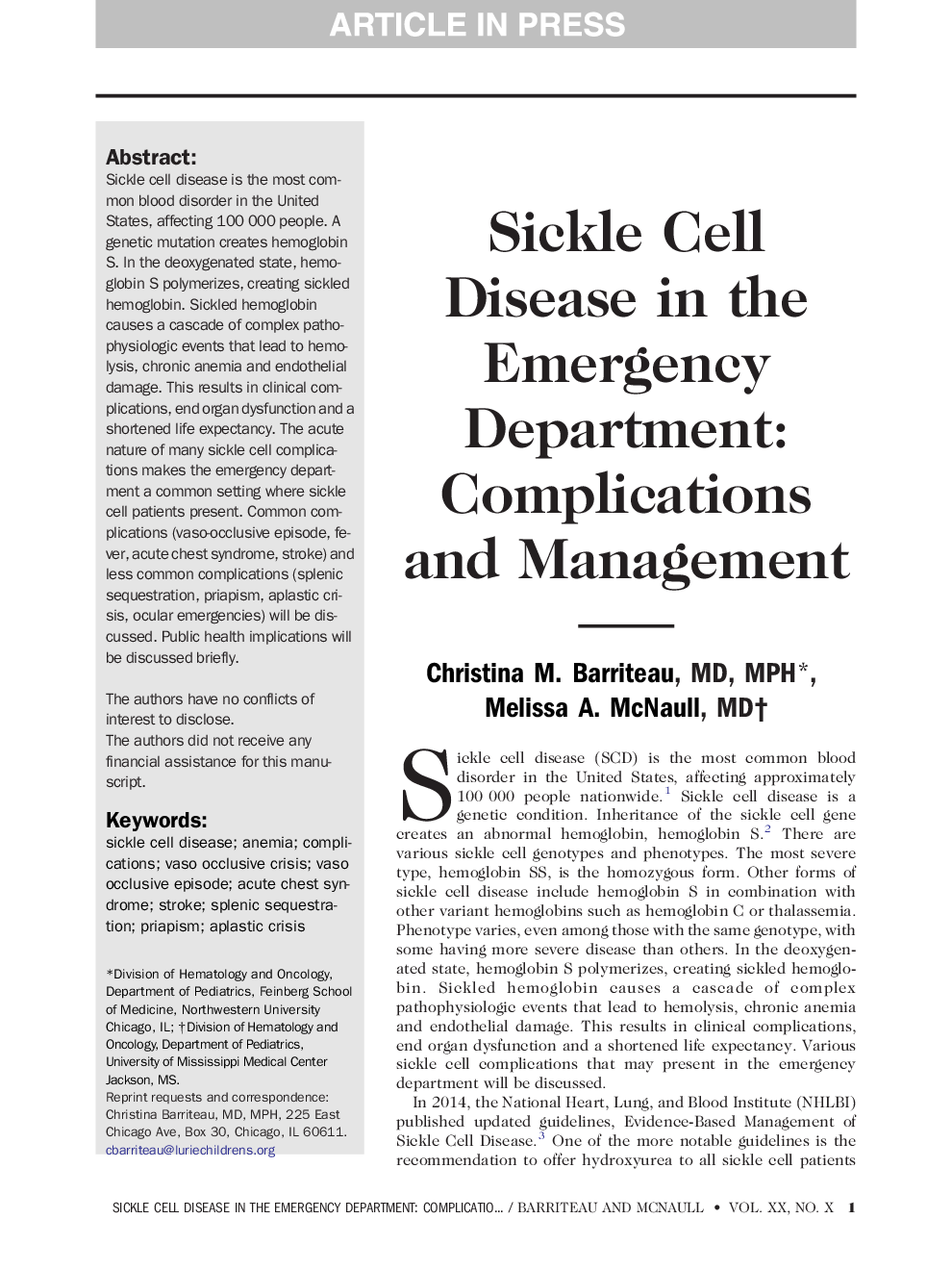| Article ID | Journal | Published Year | Pages | File Type |
|---|---|---|---|---|
| 8718294 | Clinical Pediatric Emergency Medicine | 2018 | 7 Pages |
Abstract
Sickle cell disease is the most common blood disorder in the United States, affecting 100â¯000 people. A genetic mutation creates hemoglobin S. In the deoxygenated state, hemoglobin S polymerizes, creating sickled hemoglobin. Sickled hemoglobin causes a cascade of complex pathophysiologic events that lead to hemolysis, chronic anemia and endothelial damage. This results in clinical complications, end organ dysfunction and a shortened life expectancy. The acute nature of many sickle cell complications makes the emergency department a common setting where sickle cell patients present. Common complications (vaso-occlusive episode, fever, acute chest syndrome, stroke) and less common complications (splenic sequestration, priapism, aplastic crisis, ocular emergencies) will be discussed. Public health implications will be discussed briefly.
Keywords
Related Topics
Health Sciences
Medicine and Dentistry
Emergency Medicine
Authors
Christina M. MD, MPH, Melissa A. MD,
